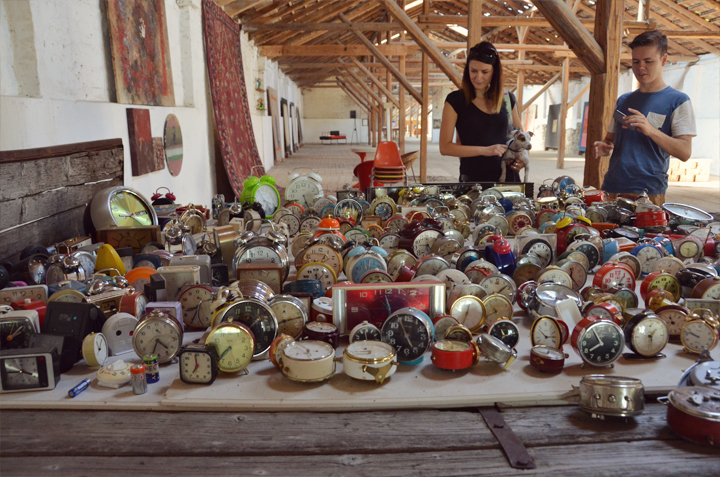Macura Museum, Serbia
"Macura? What's that?""Never heard of it." "Is that the place that closed?"
No one I spoke to had heard of the place I was most excited to see—Serbia's newest contemporary art museum, Muzej Macura.
So one sunny Sunday, Ken and I packed up and went to Novi Banovci to find it for ourselves. Our gang included my cousin Sloba, his girlfriend Jelena and their dog Coco. The three of them have been our most illustrious Belgrade 'tour guides', but even they were stumped by Macura.
We quickly found out that the window to see the place is small—May to September, by appointment, weekends only—and it's seriously tucked away. After googling, calling on the phone and asking passers-by, we finally spotted a subtle stone sign in the grass, and then in the distance a grey monolith in the cornfields. On the gate door the words "for my people" were inscribed.
"for my people"
Opened in 2008, Serbia's first private museum is the brainchild of Vladimir Macura. While living in Vienna, Macura began collecting art in order to stock his small art shop. On the side, he focused on avant-garde pieces from central and eastern Europe that he could eventually display. Years later, he acquired a unique property in the Serbian countryside giving his collection a home.
Macura enlisted architect Ivan Kucina to draw plans right on site with the proclamation: "I want a meander!" And so it was, the artwork found its winding way to a village in Serbia right on the bend of the great Danube river. Today, the blocky modernist building, all concrete and glass, houses surprising examples of "Belgrade surrealism, high modernism, conceptual art, Viennese actionism, Vojvodinian neoavant-garde, minimalism, Yugo dada..."
But what's truly unique about the museum is that it feels like a living space, or maybe like visiting the home of an eccentric relative. We spotted the founder in the shade of the trees chatting with friends and later high-fiveing visitors. In the back garden, overlooking the river, we were treated to refreshments (water infused with garden lavender). Then, we entered the museum through a colourful kitchen where we could sample heirloom apples grown on the property before wandering around inside. Admission is free, but donations are appreciated.
Lavender water at Muzej Macura
In 2014, a sister complex called Macura Warehouse opened in a former wheat barn a few kilometres away. We continued our afternoon there in much the same vein. Here, we were greeted by a resident artist from Japan. Mariko Hori will be spending a few months at the warehouse making a documentary about the Danube river.
The warehouse is another striking building on the riverbank, this time very traditional, thoughtfully stocked with contemporary art pieces and modernist furniture. Somehow, the work makes even more sense in this context. The place breathes Rudolf Steiner's credo (quoted on the museum's website): “Make harmonious relationships with the people around you, and live in accordance with the laws and rhythms of nature.”
Banks of the Danube
































